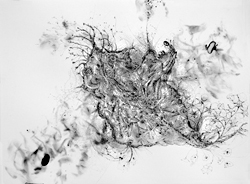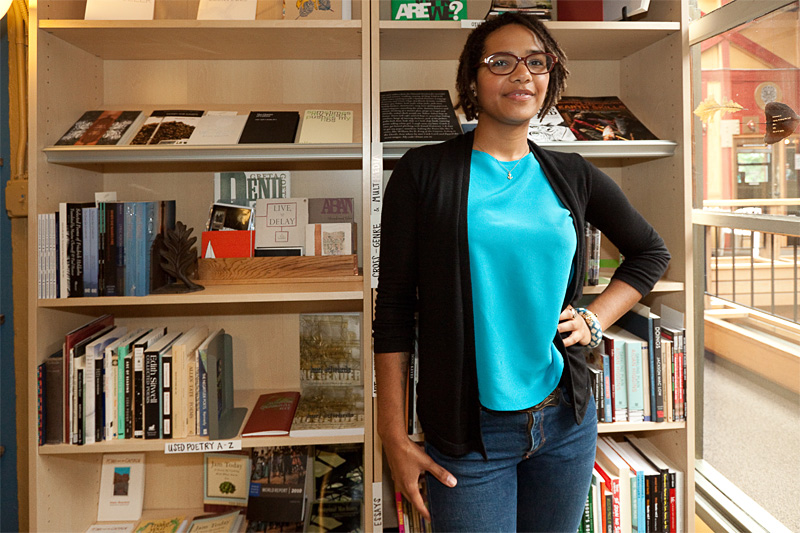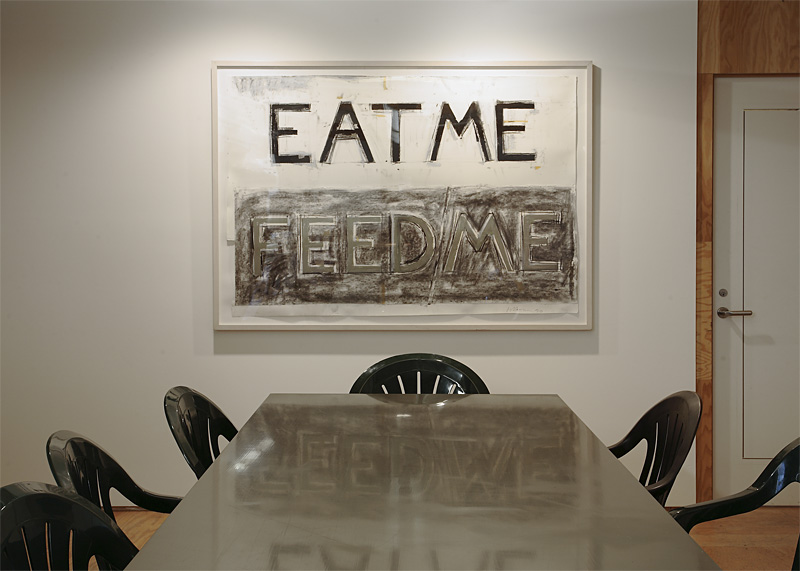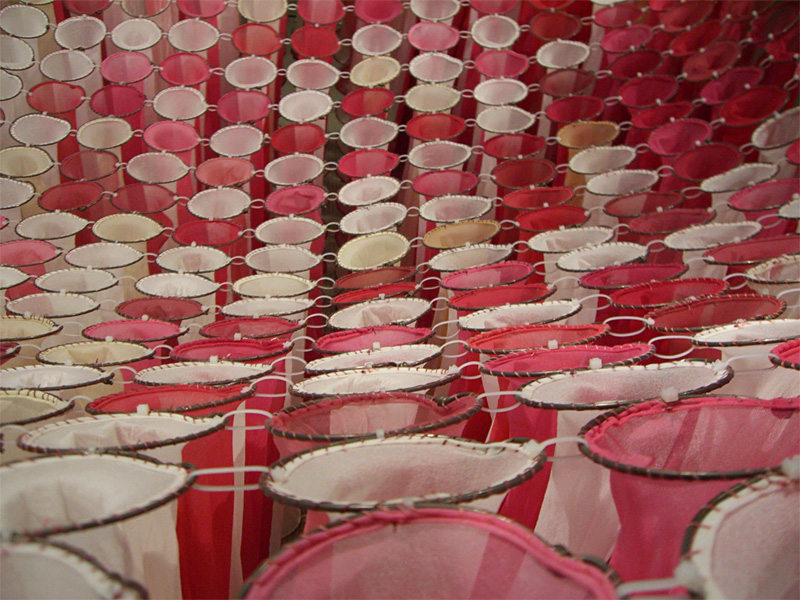Exploring nature’s forces via a range of sensual and evocative materials, “Crud,” the new exhibit at Soil Gallery, features work made of metal shavings and cabbage leaves, as well as a single, lidded eyeball.
Situated in the gallery’s front window, two arching, hornlike shapes aim at each other, not quite touching, covered in a brown, velvety, almost floral pattern. Entitled small conversation, this piece by Nola Avienne (who just graduated with an MFA from UW) is labeled DO NOT TOUCH. The temptation is strong, as the dirt-colored work’s intriguing texture makes you wonder if the surface is soft, though it’s covered in iron filings. The delicate, almost dusty metal filaments appear in petal-like arrangements, and the piece, grown over with these mossy patterns, appears as if it might fall apart at the slightest touch. There is a (literal) tension as these two horns reach toward each other, their furry coverings almost connecting.
The show’s curator, Ellen Ziegler, explains that Avienne uses the primitive technology of earth magnets (many times stronger than normal magnets) to create her work. For small conversation, she embedded differently charged magnets in wood, then sprinkled iron filings on top. The resulting patterns, says Ziegler, are “showing you what the magnetic fields look like.” And what if the piece gets inadvertently bashed? The artist simply fluffs up the delicate metal fibers with a toothpick, and the filings settle into a new pattern, Zeigler says. Here, iron reads as the organic material it is, while acting as a tactile illustration of an elemental force.
A more playful work by Avienne, blink, involves a small suitcase open to show an orbiting doll’s eyeball. As it makes its awkward, jerky rotation, the old-fashioned eyeball blinks open and shut, as if trying to follow the dark smear that its own movement creates on the paper-surfaced platform set inside the suitcase. Containing a magnet, the eye is pulled into circulation by a simple motor. The eyeball has been sprinkled with a few metal filings which seem to chase the eye around. Occasionally, the filings connect with the eyelashes and then fall off again, looking very much like lashes falling off. This piece is both humorous and creepy.
Avienne used similar techniques for a magnetic drawing machine at the UW MFA exhibit (now closed). It created concentric circles in varying colors, depending, she said, “on the barometric pressure, and how many people were breathing on it.” By the exhibit’s final week, the drawing created by the machine was more colorful, for instead of the usual iron filings pulled around by a motorized magnet (drawing circles ranging in color from chocolate brown to a more rusty hue), Avienne employed newly discovered metallic eye shadows that carry enough of a charge to act as the drawing implement/pigment.
Also crafted by way of strange technology—and blurring the line between sculpture and drawing—is curator Ziegler’s compelling piece, #5 from a drawing series titled “Chemistry Is the Emotion of Matter,” seen last month at SAM Gallerys Artist Trust exhibit (and on view again here). Zeigler used an electrode to draw sparks onto paper, creating pockmarked burn drawings. With its tactile surface, #5 reads like a crater-dotted asteroid, or perhaps a moonscape in motion.
On the east wall of the gallery, a series of transparent sleeves are populated with what look like sprigs of seaweed. Timea Tihanyi has cut away the flesh of cabbage leaves, allowing them to dry so that only the shriveled spines remain. Think of a leaf held to the light, exposing the fibrous veins, or perhaps your own circulatory systeman internal network of primal connectors, some sort of visceral map. The grid of 55 shiny, archival polyethylene envelopes contains progressively smaller and smaller leaf skeletons, as if the artist opened a head of cabbage and unwrapped it, until finally uncovering the tiny, innermost leaf. (And thats just what she did for this piece, entitled One Head.) Each dried vegetal body is pocketed inside its own see-through rectangle. There is a tangible sense of process (even time) as the leaves shrink from the largest leaf, in the top left corner, to the smallest, last leaf at the end of the bottom row. This work explores disintegration, decomposition, and ultimately, loss. There is nothing to unwrap, finally, in the center of a cabbage except one more leaf that will shrivel like the rest.
This show seems to both be, and be about, disintegration. Paper carefully destroyed to make an actual landscape depicting another landscape. Dried cabbage itself in the process of decomposition as it illustrates that process. Though Im not quite sure how a rotating eyeball might approach the cycles of the world, except to make a bit of kitschy fun at us, looking back at us following its own endless circling.








